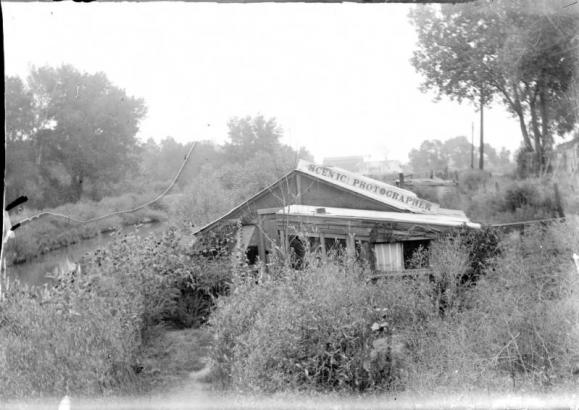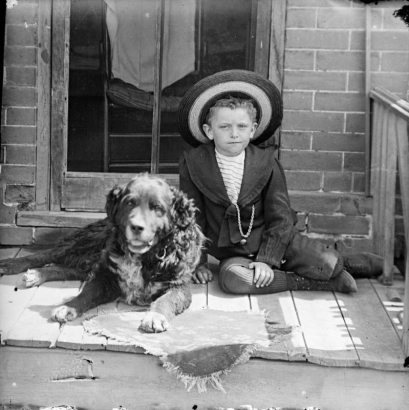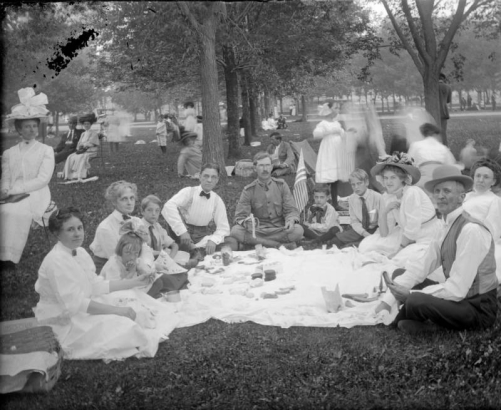Defying Adversity, Charles Lillybridge Captured the Soul of an Era.
Many of the photographers in our database are renowned as national figures, and many others are private individuals who enjoyed the new technology of photography as a hobby. William Henry Jackson's scenic photographs were reproduced by the millions, and the Native American images by David Barry and Edward Sheriff Curtis are widely reproduced and admired.
Of the less known, local photographers represented in our collection, one of the most fascinating is Charles Lillybridge, who billed himself as a "Scenic Photographer," but who took pictures of people almost exclusively.
Lillybridge's studio, which was also his house, was a makeshift structure more akin to a shed. It was built right next to the Platte River, by the Alameda Avenue bridge. Especially in the days when flooding was a frequent event, that was the cheapest real estate in town. Despite the obvious lack of money, Charles Lillybridge dedicated himself to taking photographs, of whatever he could, and at any opportunity.
Since the only thing in his neighborhood was Alameda Avenue and the path along the Platte River, he took pictures of people - the only subjects of much interest in the area. When the Alameda Avenue railroad underpass was built in 1909, Lillybridge had new targets for his camera, and he made the best of it. Apparently he was also able to make it to City Park occasionally and took people pictures there.
Thus, this "Scenic Photographer" produced a body of work vastly more interesting than pictures of mountains, rock formations or deserts. Lillybridge's often crystal clear glass plate negatives provide candid and un-posed images of ordinary people, many who had never been in front of a camera, and others who may have had their pictures taken, but weren't prepared for it just that morning.
The faces in these images show us all kinds of feeling, playfulness, suspicion, befuddlement - and how people looked on a average day coming home from work, or out for a Sunday walk. We see construction workers, delivery boys, bicyclists, and people at picnics.
Another notable fact about these photos is that it's probable that many were never printed, sitting in boxed obscurity for a 100 years, and that these faces are being seen for the first time in a century. There are only two or three of them that identify the subject, and one gets the feeling that he kept no records, charged the sitters nothing, and took his pictures out of sheer love of the process.
An interesting side note is that the cataloging of these images took place at the Colorado History Museum [now History Colorado], who owns the glass plate negatives. At that time [1995] there was no wi-fi, and since we couldn't get the City to approve a wire under Broadway, a laser link was built on the roof of the Museum with a receiver on the roof of the Burnham Hoyt wing of the Central Library. That receiver unit is still there, an artifact of recent history, which at that time was dazzling cutting edge technology.
There are 1,941 Lillybridge images in our database, and many not shown in this slide show are of steam tractors, horse drawn excavation equipment, concrete forms, and scaffolding. Many more are of people. Many of the negatives are damaged, with peeling emulsion, and some aren't as well focused, but it's fascinating to search through the whole group, or peruse the gallery below for some selected favorites.







![Outdoor portrait of a group of men near the South Platte River in Denver, Colorado. Some of the men wear baseball uniforms that read: "[?]land".](/sites/history/files/styles/blog_image/public/cdm_1460.jpg?itok=pOG4tG4F)
Add new comment